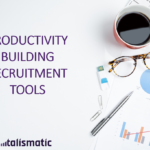Recruitment goal setting is one of the best measurable HR processes. Recruiters and hiring managers put in a lot of their time and resources to devise recruitment targets that can bring in talented candidates in large numbers. These targets hold as much value for the organization as it does for HR; in fact a lot more. To craft a meticulous and pragmatic recruitment strategy, HR needs robust recruitment metrics and analytics on its side. To define their way through a maze of data and information on various KPIs, recruiters must organize their goals under buckets.
Recruitment metrics and analytics from the Past
You can’t make a bright future without knowing what went dull in the past. Analysis of past recruitment metrics, in addition to a lot of other information, highlights:
- Things that went exceptionally well in the last recruitment cycle
- Areas where you need to focus more aggressively
- Obsolete metrics you should discontinue measuring
- Positions that attracted a lot of candidates
- Positions that did not close on time
- Recruitment platforms that did or did not give desired results
Past recruitment data will allow you to measure your efficiency as well as gauge your impact. Besides, it’s not just recruitment goals that get affected by insights drawn from the past data, employer branding, planning of interviews, employee retention or attrition, and vacancy marketing are some of the other areas that are molded using these learnings.
Competitor’s recruitment targets
You’re about to enter 2018. Do you still want to question the need for knowing competitor recruitment targets? According to the Bureau of Labor Statistics, the number of job quits and voluntary separations are on a rise. The job market is increasingly becoming a candidate’s market, where candidates dictate the terms. Demand for niche skill sets, the rise of more and more startups with fat funding, and the search for exciting and more fulfilling jobs by millennials seem to be the cause of this transformation. Finding the right talent has never been so tough!
As a recruiter in the 21st century, your relevance lies not just in recruiting a candidate (that goes unsaid) but also in finding unique talent before your competitors can. This is not as easy as it sounds, but not impossible either. A recruitment tool powered by competitive intelligence will solve the purpose. Such a tool will allow you to know:
- What positions your competitors are hiring for
- What skills and qualifications they’re demanding
- What their average job closing time is
- Whether they are planning on opening a new office somewhere in America
All that information is pure gold, isn’t it? This way, you can benchmark your past performance and weigh your plans against that of your competitor’s.
Recruitment goal setting for the Future
This is where the opportunity to change the future of your company lies. Be very careful; you’re about to make some big decisions here. As a strategic partner in your organization’s growth, you have to think of goals that are resource-effective and result-oriented. What does that call for? Informed strategies. What does that look like? A rigorously analyzed and planned recruitment strategy knows:
- Where exactly in America your ideal talent pool is located
- Which universities are training students in the skill set you’re looking for
- Which competitor has employees you could ‘poach’
- What additional skills you should be looking for in a candidate
- Similar profiles that you should be posting for
Wondering how to have all that classified information on your hands? A recruitment tool with features like Talent Density and Competitive Intelligence is your answer.
You may have possibly realized by now that the secret to successful recruitment goal setting lies in leveraging data with an intelligent use of analytics. Recruiters quite often hear the adage, “data will set you free”. Well, it sure will, but not without the right recruitment Software. Admit it or not, you’re dealing with enormous volumes of complex data while drafting your hiring strategy. Using a recruitment tool like Talismatic that reduces your workload by supplying you with actionable insights from the past, giving you a glance of what your competitors are doing, and assisting you with planning your future recruitment cycle, can end your search for the right hiring tool.

